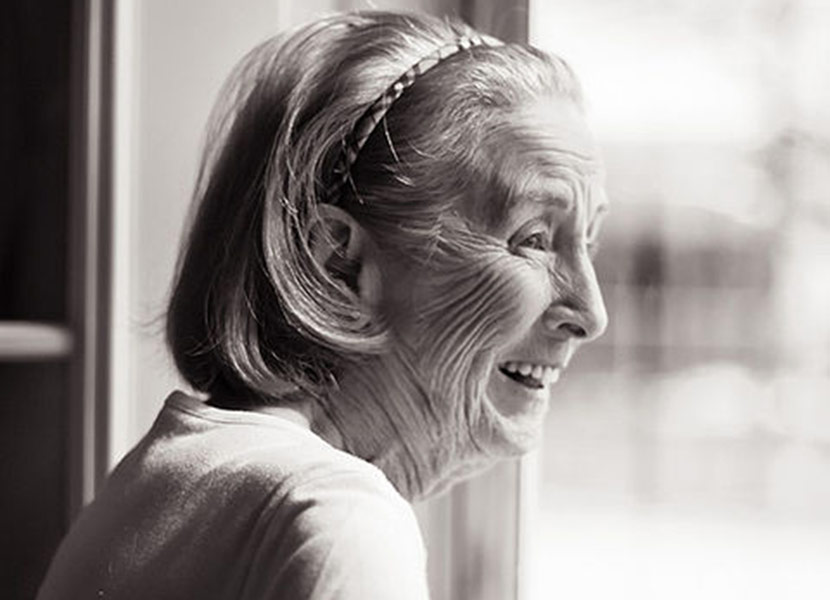
Nursing home residents are often sent to the hospital for care that often offers little hope of improving quality of life or changing the course of illness. Some facilities though seem to do much better in preventing these “potentially burdensome hospitalizations.” We discuss with Andrew Cohen, the lead author of a recent JAMA IM paper on this subject, to learn a little about what is in the secret sauce of these exceptional nursing homes.
by: Alex Smith, @alexsmithMD
Links to articles discussed:
Main article:
Other interesting/related articles mentioned:
- Sulmasy DP, Snyder L. Substituted Interests and Best JudgmentsAn Integrated Model of Surrogate Decision Making. JAMA. 2010;304(17):1946-1947. doi:10.1001/jama.2010.1595
- Dzeng E, Colaianni A, Roland M, Chander G, Smith TJ, Kelly MP, Barclay S, Levine D. Influence of Institutional Culture and Policies on Do-Not-Resuscitate Decision Making at the End of Life. JAMA Intern Med. 2015;175(5):812-819. doi:10.1001/jamainternmed.2015.0295
- Hanson, Laura C., et al. “Effect of the Goals of Care Intervention for Advanced Dementia: A Randomized Clinical Trial.” JAMA Internal Medicine (2016).
Eric: Welcome to the GeriPal podcast. This is Eric Widera.
Alex: This is Alex Smith.
Ken: This is Ken Covinsky.
Eric: Alex, we have another guest with us today.
Alex: We have a guest on the line all the way from New Haven, Connecticut. We have Andrew Cohen, who is a physician-researcher in the section of Geriatrics at Yale School of Medicine. Andrew, welcome to the GeriPal podcast.
Andrew: Great to be here.
Eric: We start off with all these podcasts by the guest requesting a song from Alex.
Alex: Yes, so, we’ve heard that you like the Simon & Garfunkel. Is that right, Andrew?
Andrew: I do. I’m a big fan.
Alex: We have a classic here, “The Boxer”.
Alex sings “The Boxer” by Simon and Garfunkel.
Alex: Ken, how do we transition from The Boxer to the topic of today?
Ken: You know, The Boxer’s a classic song about a journey and a lot of times the journey of life does end in the nursing home.
Alex: Oh, very good. Andrew, do you want to tell us a little bit about … what, you know, this is a study and we’ll have a link to it below, that you published in the journal, JAMA Internal Medicine, about avoiding hospitalizations for nursing homes for potentially burdensome care. Results of a qualitative study. I’d like you to say a little bit about why you were interested in doing this. What on earth possessed you to be interested about hospitalizations for nursing homes residents? There’s not a problem there, is there?
Laughter
Andrew: Not at all, maybe about, you know, almost a million times a year, I think. I got interested in this when I was a clinical fellow a couple of years ago. Here we take call on weeknights and for weekends and it’s pretty busy. We cover eight or nine facilities and we get, sometimes, 20 are 30 calls a day.
What became clear pretty early on was that staff at different nursing homes were acting very differently. Some nursing homes were calling very regularly to advocate for hospitalizing patients and others were almost never calling.
I got interested in the differences in behavior between different facilities and wanted to know more about how staff behaved and approached the difficult decisions about hospitalizing a frail older patients.
Eric: For this study, it looks like you went to eight different nursing homes? Four of those were those that had less hospitalizations and four were those who had high use of hospitalizations for their residents. Is that right?
Andrew: Yeah. Yes, so this is a strategy that’s been used by a bunch of different investigators. We were actually directly inspired by one of Joe Ouslander’s papers looking at potentially avoidable hospitalizations from nursing homes in which he looked at high and low hospitalizing facilities in Georgia.
We did the same in Connecticut. We were, specifically, interested in a particular type of hospitalization from the nursing home. One that we call a potentially burdensome hospitalization in which the benefits of hospitalization are likely to be very low. There’s a small chance of prolonging life or improving quality of life, but the hospitalization, itself, risks very significant burdens to the patient.
We looked at high and low hospitalizing facilities and wanted to know about … wanted to whether there were differences in how staff approached this type of hospitalization.
Ken: If I’m a family member, one thing that might confuse people is my loved one is in a nursing home and they’re sick. Don’t I want them in the hospital? Isn’t the hospital the place where sick people go and where they can get better care? Why would I want my loved one not to go to the hospital? Let’s assume that I, actually, do want them to live for a while. They’re not like a hospice end-of-life patient.
Andrew: Yeah, that’s a good question and I think it’s one that… I think, families often perceive the hospital as being a safer place then the nursing home. Then some ways, I think, don’t necessarily perceive the nursing home as a place that can even provide sophisticated medical care. They think of it as a place the person lives and not where they would get treated if they were sick.
On the other hand, we know from a very robust body of literature about how dangerous a place the hospital can be for an older person. Those risks start seeming less and less desirable when the hospitalization itself, has very little chance of making the person live longer or feel better.
Ken: Interesting, so you’re saying that families may misperceive the chance that a hospital’s actually going to make their loved one better. They might think they’re going to get better in the hospital when they won’t and they might not understand how much worse they could get in the hospital.
Andrew: Yeah, I think, that’s a very hard thing for families to rack their minds around.
Alex: It sounds like you were also suggesting from your research, or your research suggested, part of the reason that you did this study, that it’s not just the families that are coming up with these ideas. That there could be something structural about the nursing home facility or about the way that hospitalization is presented to these families.
Andrew: Yeah, I think, we think a lot about how tough it is for families to make the decision not to hospitalize a loved one. I think it’s also very challenging for providers in nursing homes to make that decision. Especially if the discussion is happening by phone or on the weekend.
One of the providers that we talked to in our study, talked about how difficult it was to be isolated from other providers and specialists and the resources that the hospital had to offer. Then told us that often times the easier and safer thing just to hospitalize the patient.
We did find that there were different approaches despite these barriers in nursing facilities that had lower hospitalization rates. Broadly speaking that staff and facilities that were low hospitalizing were more willing to really engage in case by case decision making with patients -really elicit their goals and priorities and really engage with them to try to figure out if hospitalization was really in accordance with those goals.
Eric: I know you had limited space in your research letter to describe the robust rich qualitative findings that I’m sure you had. Did liability come up? I worried about being sued or nursing home worried about being sued.
Andrew: Yes, it came up in many of the interviews and it’s certainly been mentioned in previous work on this subject. It didn’t come up in a consistent way even at the same facility, so there were people that told us that hospitalizations would occur out of fear of lawsuits, which is perhaps what you might expect. There were other people who told us that they had a fatalistic approach towards being sued. They thought that nursing homes had a target painted on their back as it was and that there was nothing they could do to prevent being sued, so it didn’t really affect their decisions.
Eric: That’s interesting.
Ken: So Andrew, one of the things … You have something intriguing in the article that challenges some notions we were taught about patient-centered decision making. Which is, a classic model is you ask a family member what they want. Here you present a model where the nursing homes that have low hospitalizations have a model of redirecting, where the family members say what they want and if the nursing home doesn’t think that’s in the patient’s best interest … Yeah, I think, you even used the word “talked them out of it” or maybe the staff used the word “talked them out of it”. It’s not a classic word in shared decision making.
Andrew: I think, it’s important to say that pretty much to the person, the people we interviewed said that decisions about hospitalization were ultimately the responsibility of patients, or in most cases, their surrogate decision makers.
What participants at the lower hospitalizing facilities had told us is that they started conversations by really eliciting patients goals and told us that this was really difficult to do -that it took a lot of time and a lot of work.
That sometimes led them when they saw family members making decisions about hospitalization that didn’t seem to be in accordance with those goals, to speak up and to say that they disagreed with those decisions.
Ken: So, you can argue with actually even a deeper level of shared decision making where you actually don’t just take what’s said literally, but you actually try to go into deeper meaning where you recognize that what’s said literally doesn’t actually represent their values. It represents a lack of information and you actually try to make sure they’re fully informed about their decisions.
Andrew: Yeah, that’s right. One of the things that we heard from participants in this study is something that certainly rings true for me in my clinical experiences. We often see patients needing to be hospitalized a bunch of times before families are able to see that there’s not improvement and to see the risks outweighing the benefits. I think, what staff members are sometimes doing is using their own experience having seen this, just to explain to families who may not understand the risks and benefits of hospitalization. What those really are and to engage in a deeper level, as you say, of shared decision making, so that the choice that’s most in accordance with a patient’s goals can be honored.
Eric: Facilities that were the low hospitalizing facilities used more case by case decision making versus default pathways. They tried to change family member’s mind versus deferring to their decisions. Like you said, that takes a lot of time.
I’m just thinking when I’m on-call in the nursing home. It’s the middle of the night. I have no idea who most of these individuals are. Am I going to take the amount of time which … for good goals of care discussion would take at least half an hour, if not an hour… in a patient, I know nothing about? How do these facilities do that? How do they handle nights and weekends?
Andrew: I think, that most facilities have trouble with this. In our study, even the more successful facilities raised that as an issue. I think that it’s likely to be true that some of this hard work is being done before an acute event arises. You know, that patients who are at risk of having an acute event of the kind where you might think of sending them to the hospital, that providers are talking to them when the sun is up.
I think, the nighttime and weekend problem is a real one and hard to imagine a fix for it without some fundamental structural changes in how nursing homes are staffed.
Eric: I noticed that you did not just interview physicians. You interviewed nurses, facility administrators, social workers, advanced practice clinicians, other individuals. Are there differences between the high utilizers and the low utilizers, as far as, who is helping families make these decisions? Like, the nurse is playing a more active role in helping family members make decisions in the traditional hierarchy where it’s the physician or the advanced practice clinician?
Andrew: We saw some differences that, at least in this small study, weren’t consistent enough across facilities to really rise above the level of anecdote. We did, for example, see in several of the lower hospitalizing facilities that the social worker had a much more active role and was involved, not just with financial aspects of the patient’s stay or completing paperwork, or things like that, but was really involved with goals of care discussions and with talking to families.
We saw, for example, that administrators in some of the lower hospitalizing facilities took a more active role. It would be interesting if we had a larger sample to see whether any consistent pattern emerged.
Alex: What’s next for this line of research?
Andrew: We’re still thinking about that. There was a, I’m sure you all know, very interesting paper by Laura Hansen a couple of weeks ago in JAMA Internal Medicine that was very thought provoking. I think, that what’s interesting about her study is that she used a video decision aid to build on top of existing practices, essentially, in nursing homes.
I think, the next step for us will be to learn some more about whether there are ways to change that behavior, perhaps by communication interventions or other means.
Ken: Do you think there’s any role for public health interventions? You know, if your loved one’s in a nursing home, think twice before you hospitalize them.
Andrew: That’s a great question. What do you think? I’d have to think about that.
Ken: Yeah, I think, one of the things you’re getting at here is, I think, I don’t know if the public really understands the limits of care. That there’s … the focus on not hospitalizing is actually not a decision often to limit care that’s helpful. It’s a decision to basically recognize that there’s simply limits of what the hospital can do. Is that there’s nothing that will be done in the hospital that can’t be done in a nursing home. That everything that happens in a hospital beyond that actually can make things worse. I don’t know if that’s generally understood by families.
Eric: Well, there are a lot of things that can be done in the hospital that can’t be done in the nursing home.
Ken: Yeah, I think, you’re right, Eric. It’s not a one size fits all. You certainly wouldn’t say never [hospitalize anybody]. There’s certainly cases where somebody in the nursing home should be in the hospital and no benefit. If you have a pneumonia and there’s usually, almost nothing that can be done in the hospital that can’t be done in a nursing home, so there’s a lot of conditions where the hospital probably doesn’t help a lot.
Andrew: Yeah, I know that there’s been interest in other areas on the nursing home side in educating patients about, in a more positive way, all the things the nursing home really can do. I think, patients still have a really hard time wrapping their minds around that.
The nursing home is a funny place in that it has increasing numbers of patients there for short stays, but a population of long stay residents. Its medical capabilities have become more and more sophisticated, so perhaps making it less about the hospital not being able to do anything and more about all the high-quality care that can be provided in the nursing home.
Eric: If there’s one advice for people working in nursing homes that you learned from this study, what would that be?
Andrew: It’s that these decisions are really, really hard. There’s no way around that. That providers at all levels need to spend a lot of time in a back and forth discussion with patients and their families about these extremely difficult decisions.
Ken: Yeah, well, thank you for pushing this forward. I mean, this is a really important question.
Alex: This is really interesting work. I like this approach. It reminds me of some work that Liz Dang has done looking at differences in hospital cultures. As well as, some work that Daniel Sulmasy has done, as far as, promoting best interest standard for patients that’s grounded in an in-depth deep understanding of their interest and not on a superficial level approach to letting them choose among options.
Andrew: I think, is this what he calls “substituted interest”?
Alex: Yes, exactly. Exactly.
Andrew: Yeah.
Eric: We’ll put up a link to Dan Sulmasy’s substitute interest article on GeriPal. I heard a little strum of a guitar just a second ago, Alex. You want to end us with a little bit more?
Alex plays “The Boxer” by Simon and Garfunkel.
Transcript was edited by Sean Lang-Brown



